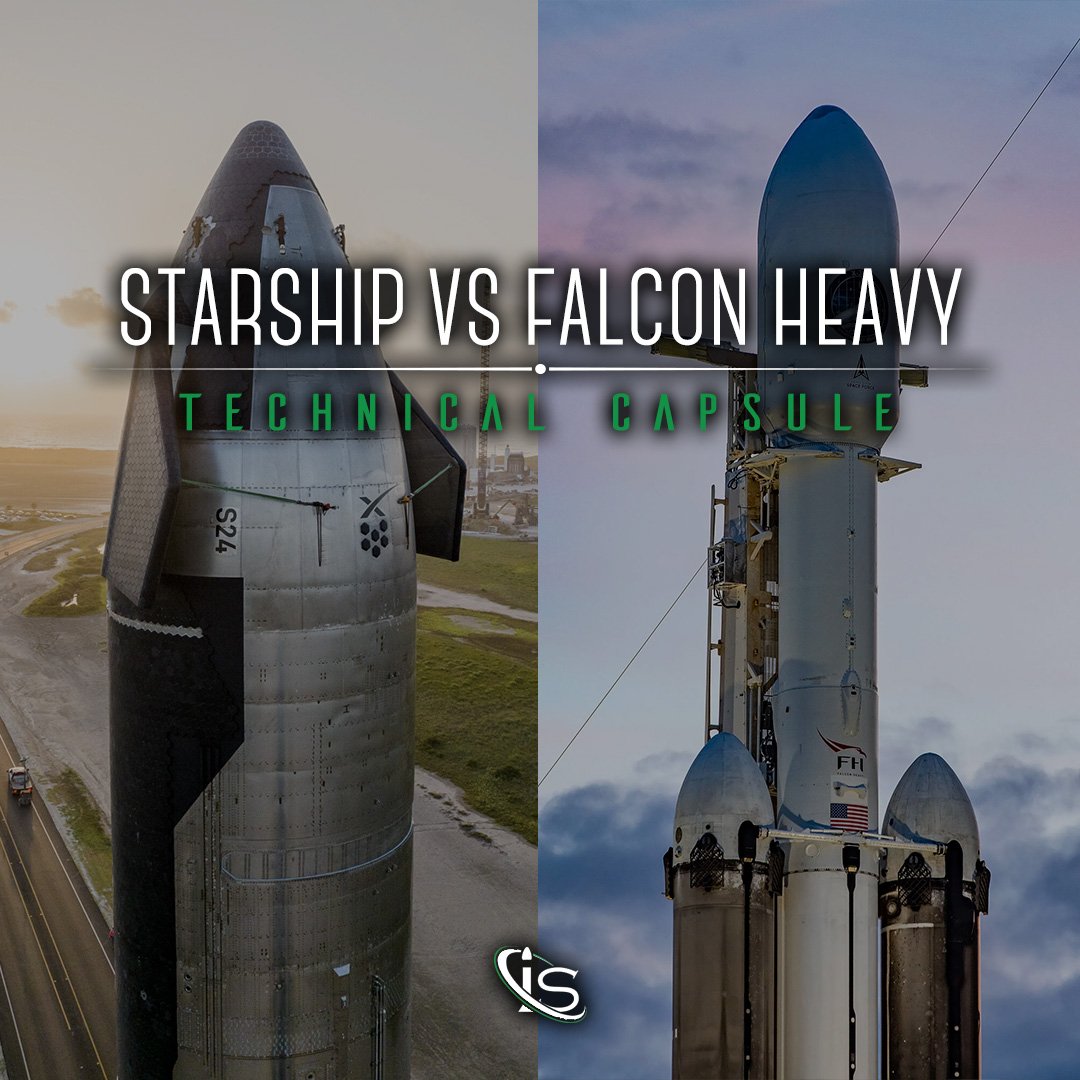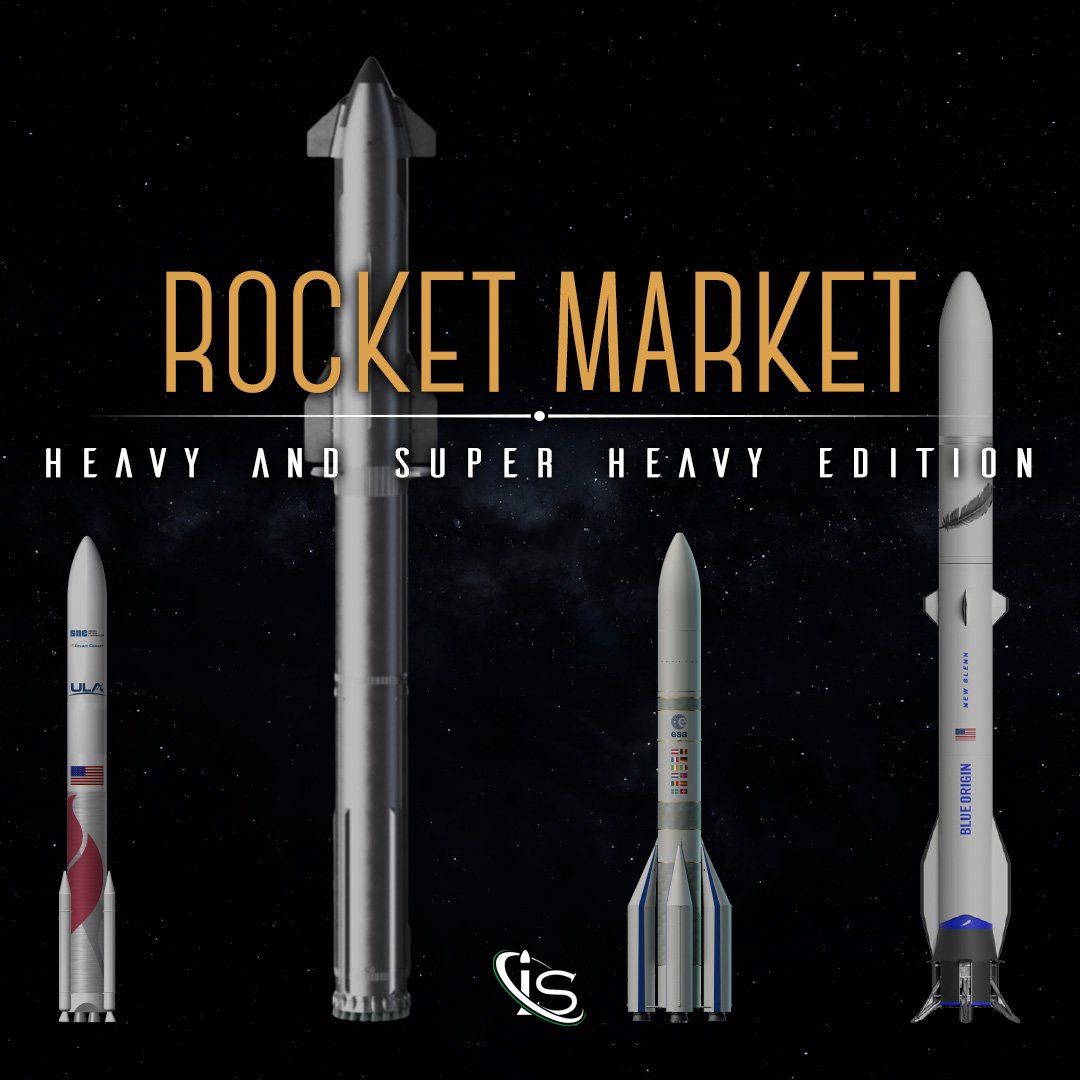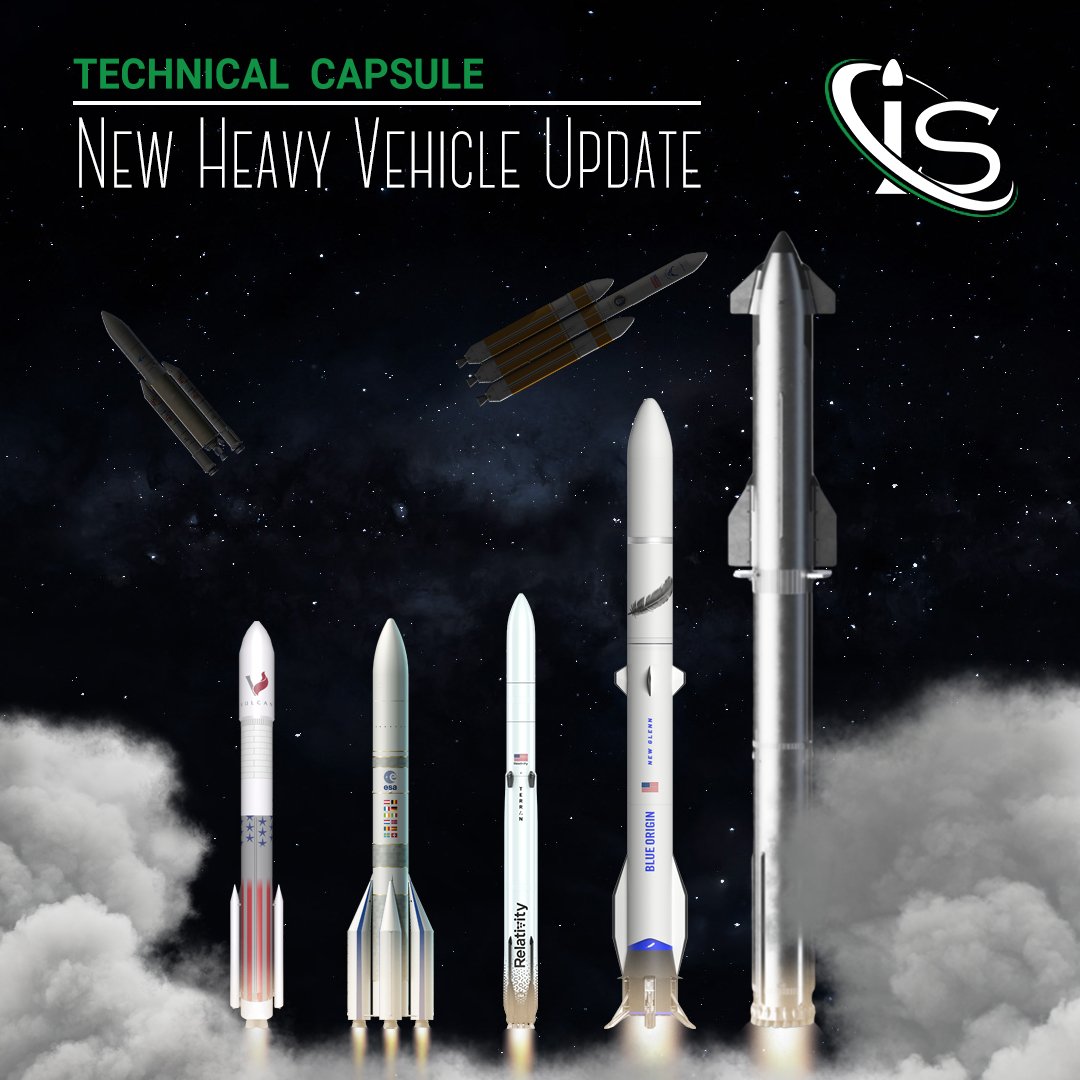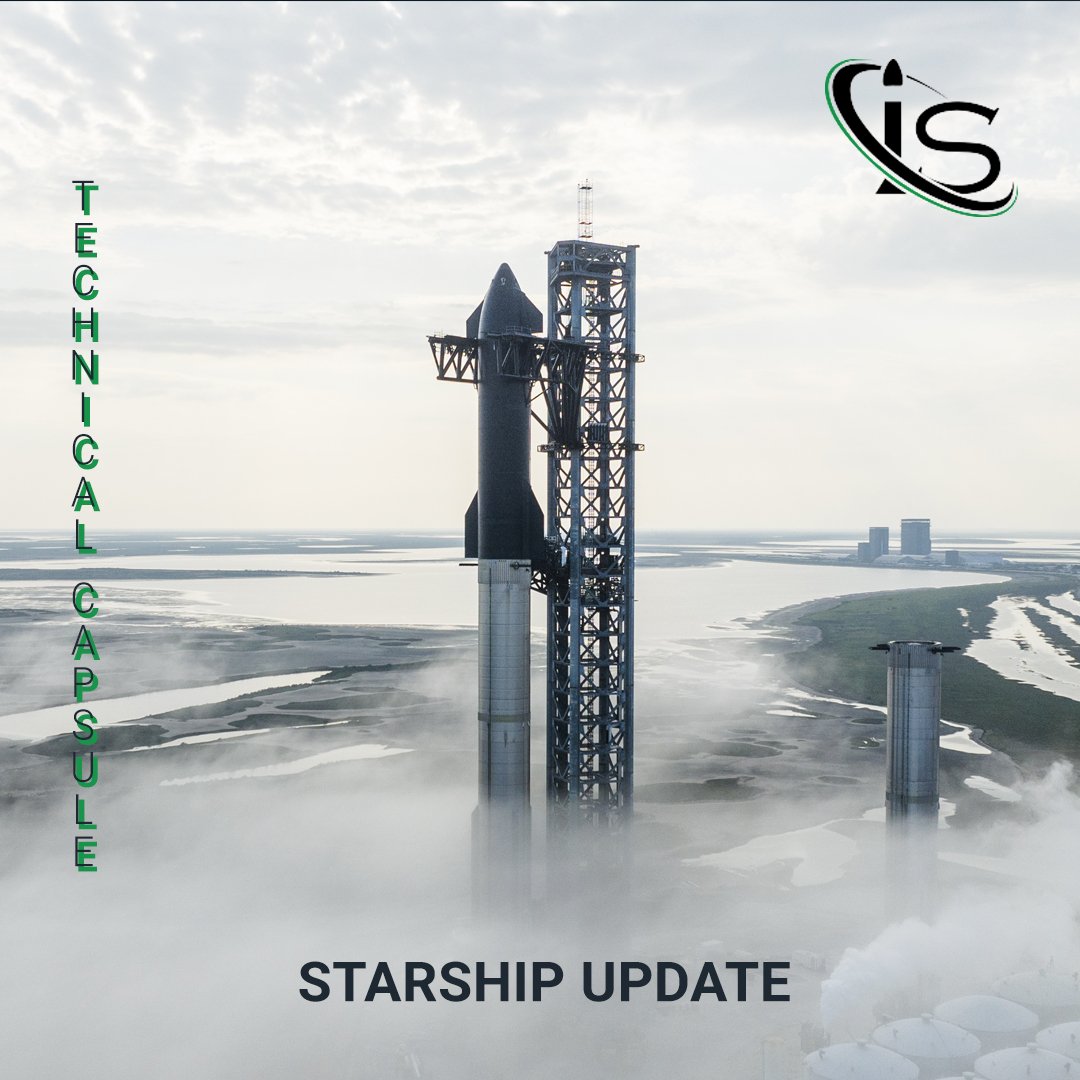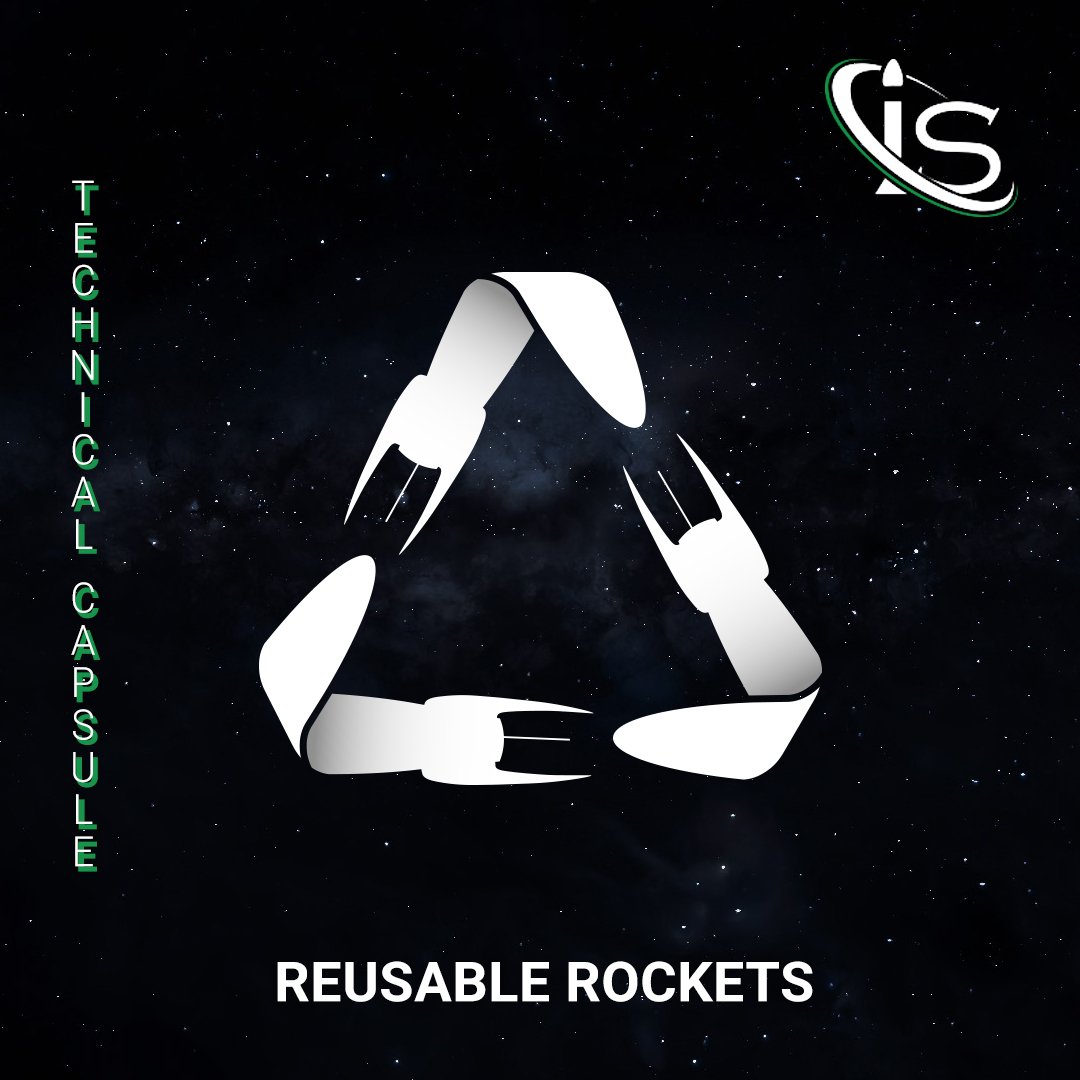In this appointment with the “Launch Vehicles Under Development” column, we have two colossal rockets to discover! These two rockets are the most popular and anticipated of the last few years. Both of them have the goal to overcome the size and power of the massive Saturn V.
And the rockets in question are NASA’s SLS and SpaceX’s Starship: two super heavy-lift (in the LV NASA Classification) two-stages rockets, with the goal to explore “the Moon and beyond”. Let’s get into the details of the fascinating SLS vs Starship projects.
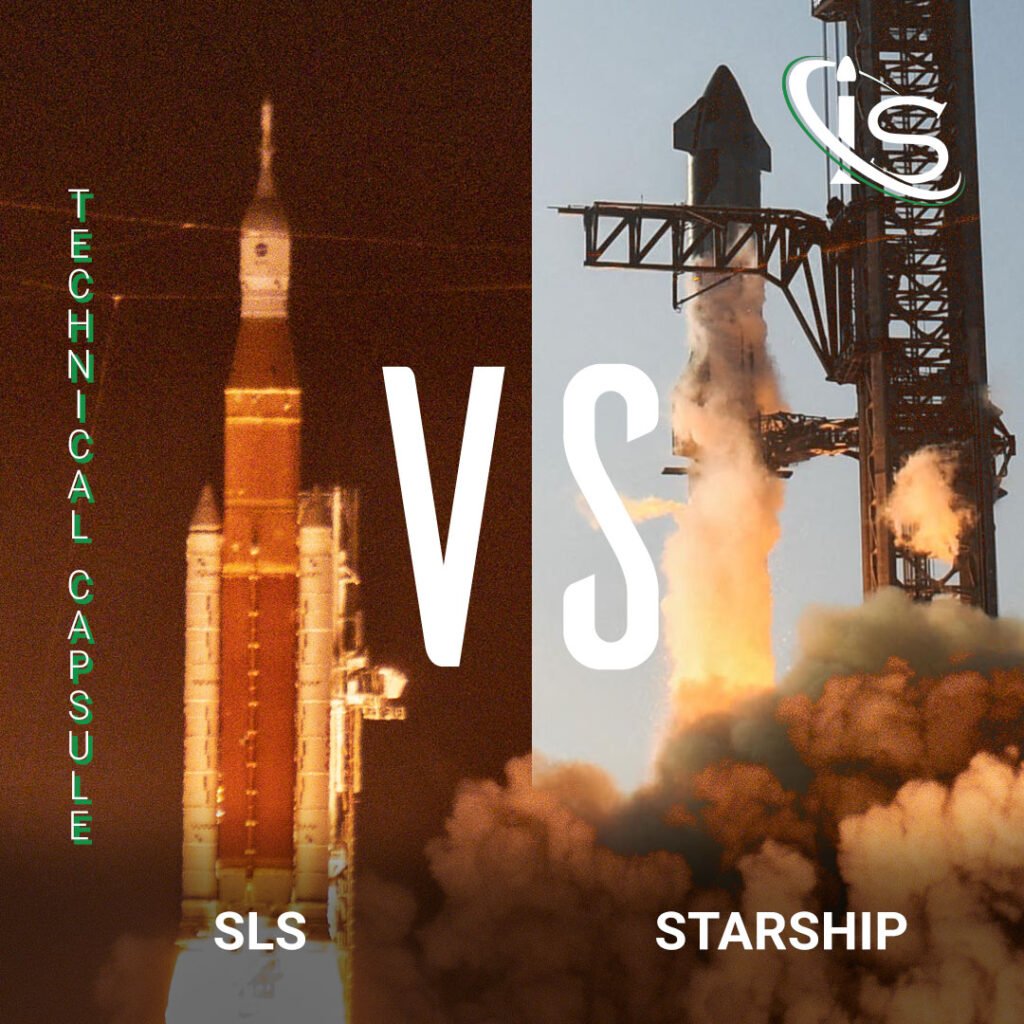
NASA’s SLS
The project “SLS”, an acronym for Space Launch System, had been under development since 2011 by NASA. The first SLS successfully lifted off for the first time on November 16th, 2022. NASA’s stated humorously that they are building the SLS for a “New generation of bootprint in lunar regolith”. But, indeed, the real aim is to create “a platform (SLS) for human missions to the Moon and science missions to explore the solar system”.
The SLS is a Space Shuttle-derived launch vehicle — meaning it has been built with already developed components of the Space Shuttle program — and it is designed with the collaboration of a lot of companies:
- Boeing designed the Core stage with its 64.4 meters height;
- The four core engines are contracted by Aerojet Rocketdyne: the fuel and oxidizer for these are LH2 and LOX, respectively;
- Northrop Grumman built the two solid boosters, with five propellant segments of Polybutadiene acrylonitrile (PBAN);
- The Upper Stage, called ICPS, Interim Cryogenic Propulsion Stage, was designed by ULA.
NASA is working on three transitional phases for SLS that will fly in succession: the already launched Block 1; Block 1B, which will launch the Artemis IV mission in 2027; and the successive ones until Artemis IX, which will instead fly on SLS Block 2. From Block 1 to Block 2 the capability, the height, and the maximum thrust will continuously increase to target ever more ambitious missions. But let’s go deeper into the already mentioned Artemis missions.
Artemis Program
The maiden flight of SLS, on November 16th, 2022, represented an important step for the SLS project. In fact, Artemis I — which is the mission’s name — carried the Orion capsule into lunar orbit. It was a crew-less flight to test out all the systems in deep space and the procedures on the ground. After deployment, the Orion Capsule remained in orbit for 25 days before returning to Earth. The rocket lift off was delayed from the initial target of August 29th to November 16th — still from the Kennedy Space Center. Therefore, Orion returned on December 11th. This first mission was a success and, aside from some damage to the pad, the launch opened the doors to future Artemis missions. And just to share in this wonderful memory, our team was in Cape Canaveral that fateful night and saw the liftoff of this giant rocket!
To have a clear overview of the next Artemis mission check out the Artemis Program article.
The Artemis program includes a second flight with astronauts to make the same trip in 2024, still on board the SLS Block 1. Then, in 2025, a third mission with the objective to set foot on the moon is also planned. To stay up-to-date on all the future missions of SLS, click here.
SpaceX’s Starship
The Starship Project has been thoroughly explained in previous Technical Capsules. SpaceX’s main objective is to create a road to Mars. To have life on Mars, the first requirement is the construction of a self-sustaining city. In order to accomplish this, SpaceX predicts that Starship has to carry 100k tons of material to the red planet. According to estimates, Starship should be launched three times a day for ten years to launch 100k tons. This rate of launches can only be achieved if Starship is easily and rapidly reusable.
The Starship system is divided into two stages: the booster, Super Heavy, which will have a maximum thrust of 72 MN, and the spacecraft, Starship. Both of them will be recovered, making the Starship system fully reusable. However, they will have two different return times; Super Heavy will take about six minutes to come back, so it can be reused in a short time, while the ship will have to make almost one orbit around the Earth, which requires about 90 minutes. Therefore, the project is to have more ships than boosters.
The maiden flight, awaited for many months, lifted off from Boca Chica on Apr. 20th, 2023. The configuration was the Super Heavy Booster 7 and ship SH24, with the characteristics shown in the following chapter. Unfortunately, there were some troubles in the stage separation and the rocket lost control during the flipping maneuvers. This was clearly a bad result for SpaceX; however, seeing a massive rocket, 120 m tall, lifting off from the ground was an incredible emotion. Imagine a 25/30-floor building taking off from the ground. And not just the height was incredible, but also the number of engines simultaneously turned on: 30!
Click here for all the updates on the Starship maiden flight and future missions.
Final Comparison
SLS vs Starship vs Saturn
SLS vs Starship vs Saturn V, which is the most powerful rocket that has ever successfully lifted off — and yes, we specify “successfully” since Starship, which also lifted off, is taller than Saturn V. To get an idea of the hugeness of Saturn V, we directly quote NASA’s words:
Fully fueled for liftoff, the Saturn V weighed 2800 tons, the weight of about 400 elephants. The rocket generated 34.5 million newtons of thrust at launch, creating more power than 85 Hoover Dams.
NASA
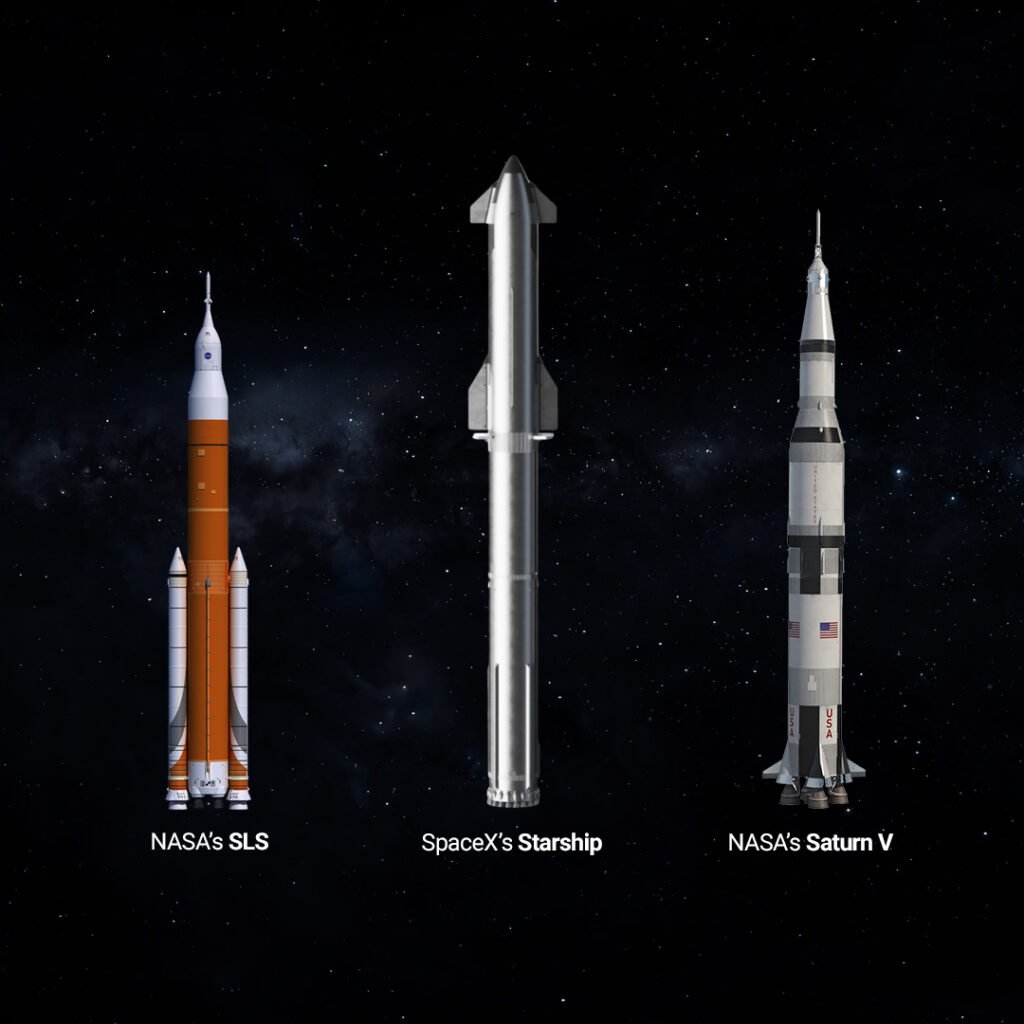
These words highlight the grandeur of the Saturn project. The fact that Starship is heavier, taller, and more powerful than Saturn V has, of course, led to even higher expectations. In fact, the thrust of Super Heavy is more than twice that of Saturn V! For anyone curious, you can check out Saturn V’s Technical Capsule to discover more about this incredible rocket.
Another important aspect to highlight here, is the fact that SpaceX is designing a fully reusable rocket, while NASA is making an expendable one. This will clearly influence the cost of the launches. In fact, the estimation of the cost per launch for Starship is nearly an order of magnitude less than SLS.
| NASA’s SLS Block 1 | SpaceX’s Starship | NASA’s Saturn V | |
|---|---|---|---|
| Capability to LEO | 95 t | 100-150 t | 140 t |
| Capability to translunar injection | 27 t | 45 t | |
| Height | 98 m | 120 m | 110.6 m |
| Max diameter | 8.4 m (core) | 9 m | 10.1 m |
| Gross Lift-off Weight | 2603 t (fueled) | 5000 t | 2900 t |
| Max Thrust | 39.1 MN | 89.2 MN | 34.5 MN |
| Reusable? | Expendable | Fully Reusable | Expendable |
| Cost per Launch | > $2 billion | $185 million | |
| Maiden Flight | November 16th, 2022 | April 20th, 2023 | November 9th, 1967 |
Core Stages
By core stage, we mean the central core of SLS and the spacecraft portion of Starship. Both of them are propelled with liquid-propellant rocket engines; the first with liquid hydrogen fuel and the second with sub-cooled liquid methane.
The 4 RS-25 engines of SLS are produced by Aerojet Rocketdyne. However, the Starship Raptor 2 is a SpaceX production. The Raptor 2 engine, presented a few months ago, is a newer version of Raptor 1, completely redesigned to be lighter and more powerful. It has less components and, therefore, less complexity.
| SLS BLock 1 | Starship | |
| Contractor | Boeing | SpaceX |
| Height | 64.6 m | 50 m |
| Diameter | 8.4 m | 9 m |
| Engine Name | RS-25 | Raptor 2 |
| Number of Engines | 4 | 3 (vacuum), 3 (raptor engine) |
| Oxidizer / Fuel | LH2/LOX | CH4/LOX |
| Max Thrust | 9 MN | |
| Specific Impulse (vacuum) | 452 s |
Booster
Here, the comparison is not so easy, since the Super Heavy is also its first stage, and, so, it works in series with the Starship spacecraft, while the boosters of SLS are in parallel with its core stage.
As with most boosters, the SLS’s Booster is a solid-propellant engine with a grain of Polybutadiene acrylonitrile, and it generates 16 MN of thrust per booster.
| SLS’s Solid Boosters (x2) | Super Heavy | |
| Contractor | Northrop Grumman | SpaceX |
| Height | 54 m | |
| Diameter | 3.7 m | |
| Engine Name | Raptor 2 | |
| Number of Engines | 33 | |
| Oxidizer / Fuel | PBAN | CH4/LOX |
| Max Thrust | 16 MN | 74.4 MN |
| Specific Impulse (vacuum) | 269 s |
Upper Stage
The upper stage, ICPS, is a modified Delta IV Cryogenic Second Stage, realized by ULA. Its engine, the Aerojet Rocketdyne’s RL10B-2, is propelled with liquid hydrogen and liquid oxygen, just like the core stage.
| SLS’s ICPS | |
| Contractor | ULA |
| Height | 13.7 m |
| Diameter | 5.1 m |
| Engine Name | RL10B-2 |
| Number of Engines | 1 |
| Oxidizer / Fuel | LH2/LOX |
| Max Thrust | 110 kN (fueled) |
| Specific Impulse (vacuum) | 462 s |
And here we are at the end of the article on SLS vs Starship. We have other posts on this topic of “Rockets Under Development”, and we highly recommend the one treating two other “Giants”!
Make sure to stay tuned on our website and social media. We have a lot of interesting articles planned that will discuss Heavy and Super Heavy rockets, comparisons between rockets, and, also, Starship updates. They will be coming out in the next few weeks, so see you soon!
